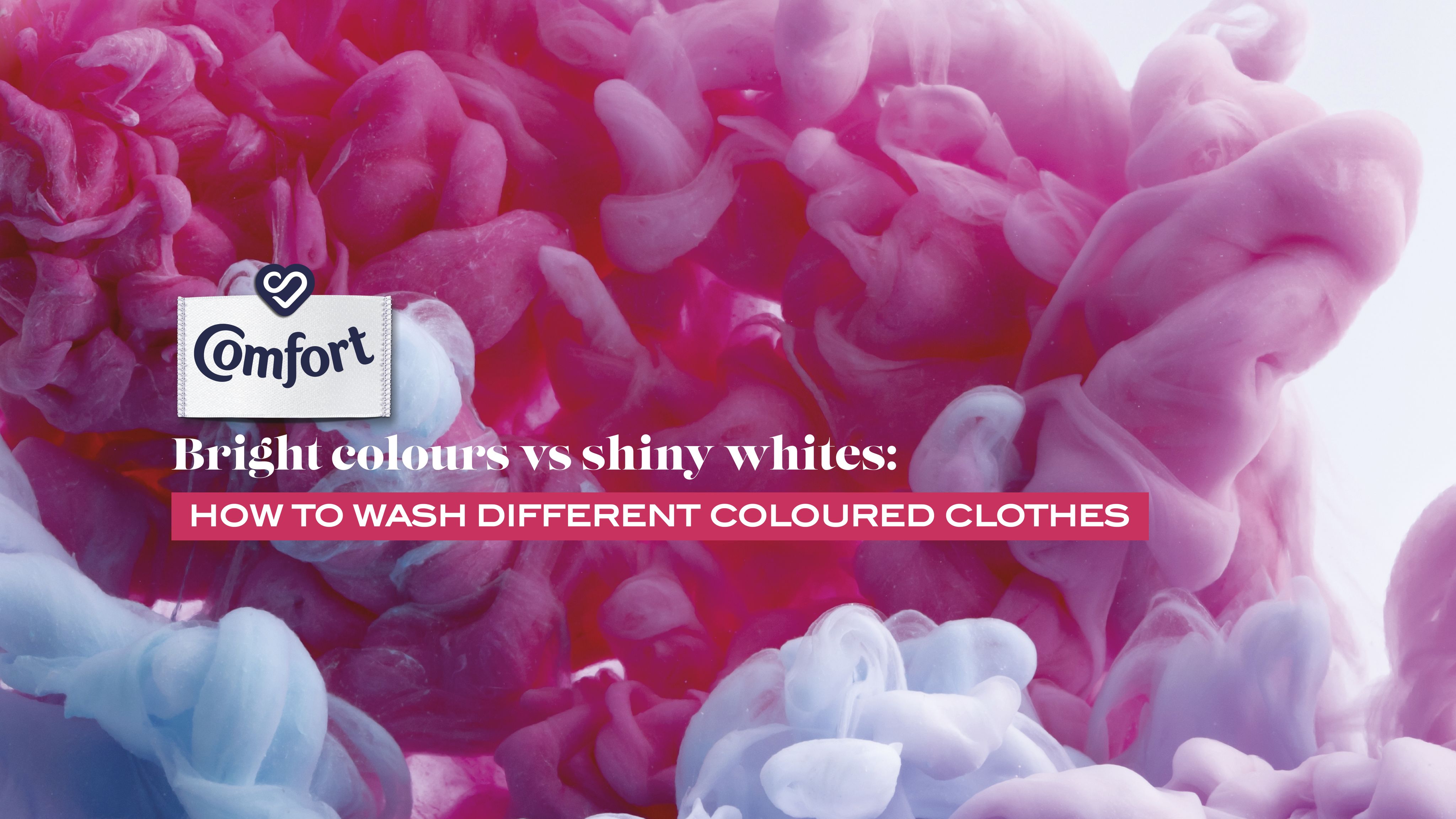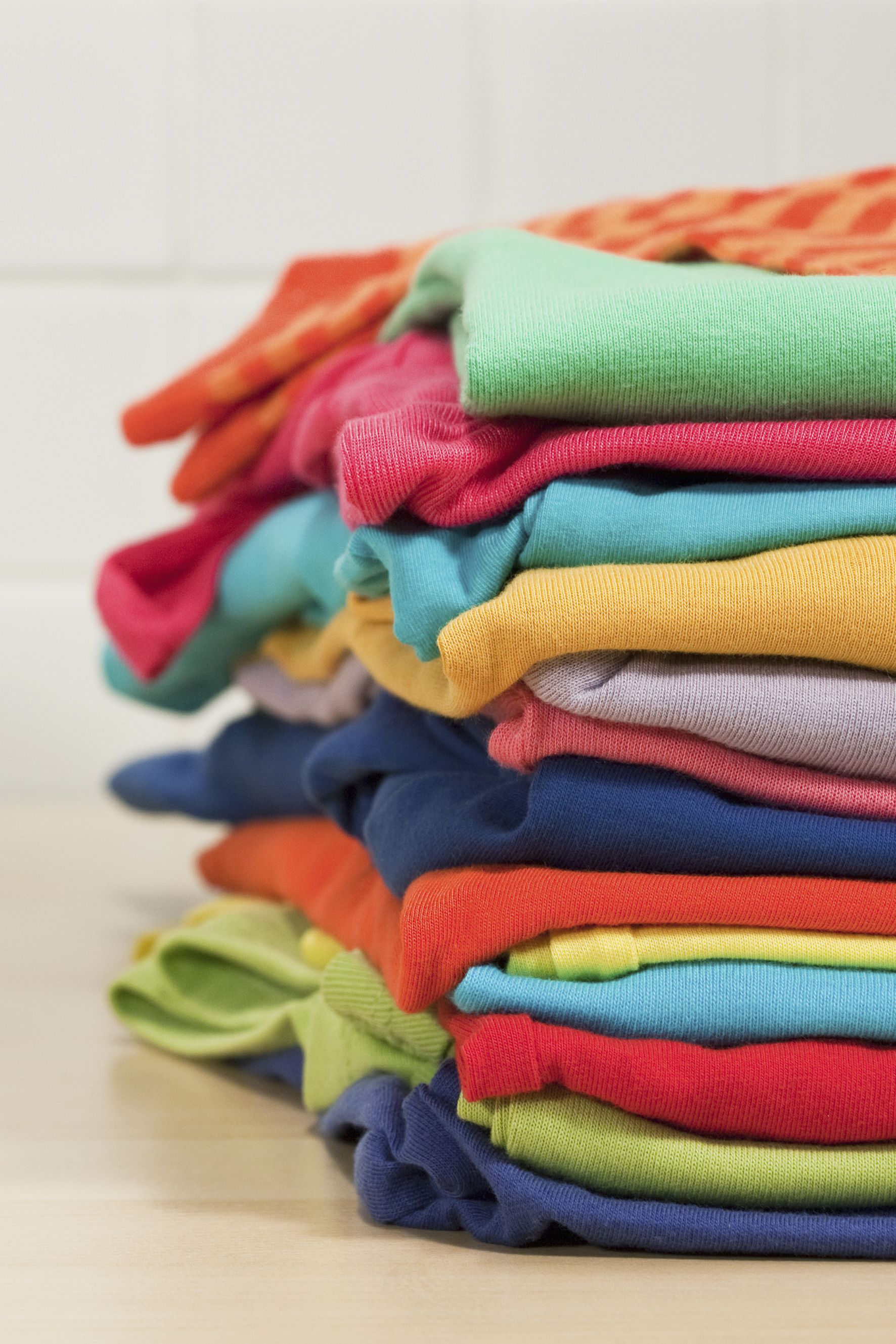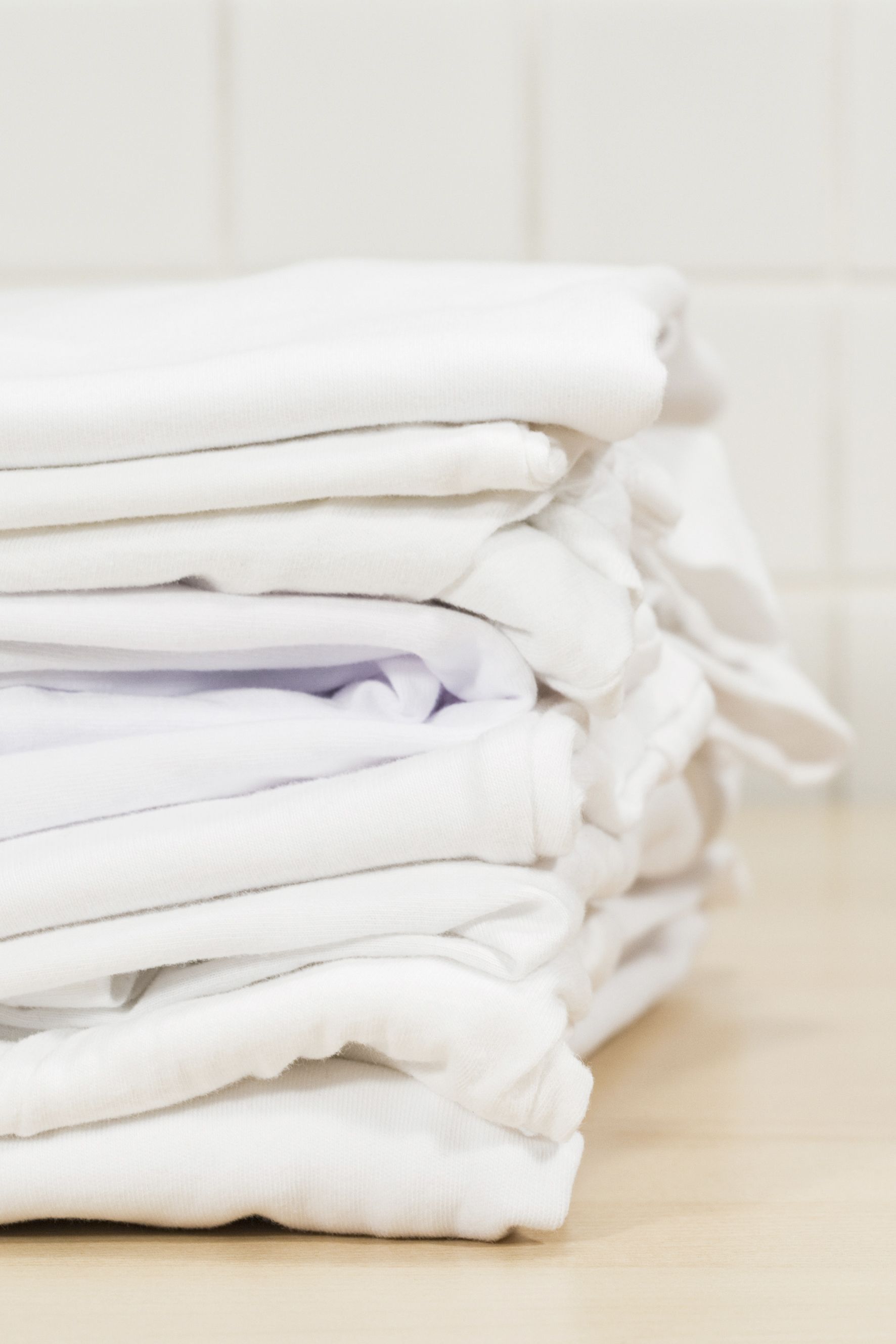
Comfort's fibre care technology is what your clothes have been waiting for. But if you want to be sure you're not going to end up with a pink shirt that used to be white, here is an easy how-to guide on sorting and dealing with different coloured clothing.
The key to efficient wash cycles is proper sorting. Once you've got the pile of whites separate from the brights, you're set for the next steps.


1 Choose Comfort. It offers colour protection, won’t cause your clothes to stretch, stiffen or distort, and best of all - your clothes come out fresh and soft as can be and stay that way throughout the day.
2 Do the bleed test – Wondering if something can be washed with other clothes and can’t figure it out from the label? Wet a small, preferably non-visible part of the garment and then dab it with a white cloth. If any colour transfers to the cloth, or the spot seems to fade slightly when wet, don’t take a chance and rather put it through a cold wash separately from the rest.
3 Wash new things separately first. Things like jeans and other dark-coloured clothing often need a first wash before they can be washed with other clothing. Choose cold to lukewarm water settings and wash the item separately before you add it to a bundle.
4 Sort correctly - again. Don’t think that because all the clothes are dark, they can be washed together. Delicates like underwear or handmade fabrics can’t handle the same wash as denims, towels or linens. Separate your dark pile into smaller piles of delicates versus heavy-duty fabrics. Also pay attention to whether the fabric is synthetic, like for workout gear, or natural, like linens. Synthetic fabrics can’t handle the high temperatures that natural fabrics can, so rather choose warm water over hot water if you put in a mixed load.
5 Choose the correct water temperature. Cold to warm water is better for darker colours. The high temperatures can often cause colour to fade.

1 Treat stains before you wash. Cuffs, collars or spills – all these need to be pre-treated before you throw your whites in the wash. Mixing a little detergent like Omo with water and applying it as a paste on the affected area works well, depending on what kind of stain you’re dealing with. Shampoo works well on brown collar stains, while salt or white wine work well on red wine if you catch the stain fast. See here for more info on stains.
2 Presoak heavily soiled items. We all wonder if this is necessary – well, with white washing, it pays off. It prevents the dirt from soaking into the other clothing, preventing dullness. It will also mean the wash is more effective for the heavily soiled items.
3 Hot water is best. Unlike dyed fabrics, whites do better with hot temperatures, making the wash more effective. Check the label and always choose the hottest temperature the fabric will endure.
4 Use the correct detergent and softener. Choose a detergent with bleach alternative or enzymes, like Omo Auto Liquid or Skip Auto liquid, and use the maximum recommended amount. Don't be afraid to add a capful of Comfort here - it helps washing keep their shape and will ensure you get that freshly-laundered-sheets feeling with things like white bedding and towels.
5 Make sure your washing machine is clean. Residue from a washing machine can easily be left behind on clothes, and whites will suffer most. To clean your machine, set it on the largest load at the hottest temperature. Add a litre of vinegar and 250ml (1 cup) baking soda and start the cycle. A few minutes in, pause the cycle and let it sit and soak for a while. Scrub the insides to remove build-up – either during the cycle if you can open the machine, else hit play and let the cycle finish first. Then set your machine to rinse and do a second cycle on the hottest setting.
6 Add some sunshine. If the weather and your living arrangements allow for it, hang your whites to dry in the sun. This will help lift yellow and keep them brighter for longer.

